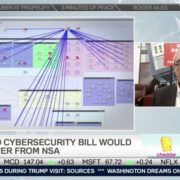Petya: Recommendations for defense and remediation
The CyberWire | June 29, 2017
What can enterprises do, now, to protect themselves against Petya and the other, similar attacks soon to follow? This won’t be a one-time thing: WannaCry wasn’t, and it’s reasonable to expect fresh ransomware campaigns to keep coming, hard and fast. The attackers get a good return on investment from repurposing tools and exploits. There’s no reason to expect them to stop.
For your coverage of Petya, Ray Rothrock, CEO of RedSeal, said in an email, “It’s happening again. This time in a slightly different form and name, but it’s the same. A new strain of Petya malware is going after unpatched Windows systems via EternalBlue, the same stolen NSA tool exploited by WannaCry.”









